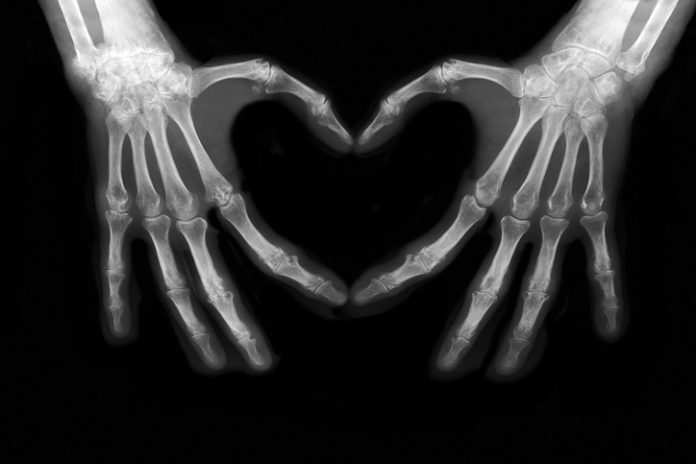Dual World and Olympic champion hurdler, Sally Pearson, OAM, is teaming with doctors, patients, and politicians to release key findings from Healthy Bones Australia’s ‘Know Your Bones Community Risk Report’ Third Edition, 2023 at a Parliamentary Friends of Aged Care event in Parliament House, Canberra.
The Healthy Bones ambassador who clipped a hurdle and shattered her wrist at an international athletics meet in Italy 2015, is urging Australian adults to “know your bones” today, prior to World Osteoporosis Day (October 20).
The new report summarises data from more than 104,000 Australians who have completed the Know Your Bones online self-assessment tool, developed by Healthy Bones Australia in partnership with the Garvan Institute of Medical Research, to help Australians understand their potential risk for developing osteoporosis, and bone breaks. The test provides personalised recommendations about bone health, which they can share with their GP for further discussion.
According to Healthy Bones Australia Chair, Endocrinologist, and Head of the Department of Medicine, School of Clinical Sciences at Monash Health, Professor Peter Ebeling, AO, FAHMS, Melbourne, the report reveals significant under-investigation and inadequate treatment in those at risk of osteoporosis.
“The report is showing gaps in care, with one-in-two (52 per cent) adults who reported a bone fracture, yet to undergo a bone mineral density (BMD) test to investigate their bone health.1
“Of those respondents who reported a fracture, 87 per cent are not taking osteoporosis medication, while the vast majority have lifestyle risk factors,”1 said Prof Ebeling.
Sally was shocked by the difficult recovery process from her shattered wrist in 2015, which significantly compromised her mobility, independence, and mental wellbeing.
“The rehabilitation process was more traumatic than the actual fracture. Thankfully, because my bones were generally quite strong, I was able to mount a successful recovery from my injury, and to win my second World Championship in 2017,” Sally said.
“This is not the case however, for many Australians living with osteoporosis. We know that too many people are suffering unnecessarily from broken bones that could have been prevented.
“Based on my personal experience with fractures, I know how important it is to look after your bones,” said Sally.
The new report calls for earlier investigation of bone health through BMD testing, and greater emphasis on medical intervention to reduce the impact of preventable fractures. It further urges Aussie adults to lead a bone-healthy lifestyle to minimise their risk of developing osteoporosis.
CEO of Healthy Bones Australia, Mr Greg Lyubomirsky, Sydney, said our goal is to improve the diagnosis and treatment of osteoporosis, to reduce the impact of preventable fractures.
“We are pleased so many Australians are using this self-assessment, which represents a simple first step to checking bone health. However, we need to close this gap between identifying risk factors, and taking action.
“Our goal is to improve the diagnosis of osteoporosis, and advocate for early intervention to reduce the impact of preventable fractures,”1 Mr Lyubomirsky said.
“Concerningly, our 2023 report reveals half of all fractures are occurring in adults aged 50-69 years, and nearly a quarter of respondents over 70 years (24 per cent) with clinical risk factors for osteoporosis, have not undergone a BMD test.
“More than one-third of respondents reported a clinical risk factor (36 per cent), yet only half (52 per cent) reported having a BMD test,”1 said Mr Lyubomirsky.
“The report also confirms lifestyle risk factors are common, and addressing inadequate calcium and vitamin D levels, lack of exercise and smoking, excessive alcohol intake, are important for supporting bone health.”
Healthy Bones Australia Medical Committee Deputy Chair and Specialist Endocrinologist at St Vincent’s Hospital, Dr Weiwen Chen, Sydney said
“Fractures from poor bone health can severely disrupt life and mobility. Those affected are often unable to work, drive, shop, or perform simple household tasks. Any fracture is serious, and sustaining a first fracture can double your risk of re-fracture.3
“We need to improve investigation rates for those living with risk factors for poor bone health, or those who have already broken a bone, particularly given BMD testing is widely available, and reimbursed via Medicare for many risk factors, and for those aged 70 years or over.
“Effective treatment options are also available in Australia to reduce fracture risk,” Dr Chen said.
“We encourage GPs working at the frontline of osteoporosis care to utilise these tools to capture at-risk consumers and manage osteoporosis,”
References
1.Healthy Bones Australia and Garvan Institute of Medical Research. Know Your Bones Community Risk Report Third
Edition 2023. (2023).
2.Healthy Bones Australia. Risk factors. 2022 [cited October 2022]; Available from:
https://healthybonesaustralia.org.au/your-bone-health/risk-factors/.
3.Australian Institute of Health and Welfare (AIHW), Australia’s health 2010. 2010.
4.Watts JJ, Ablmanyl-Ochom J. Sanders KM. Osteoporosis costing all Australians A new burden of disease analysis – 2012
to 2022. Osteoporosis Australia 2013.






